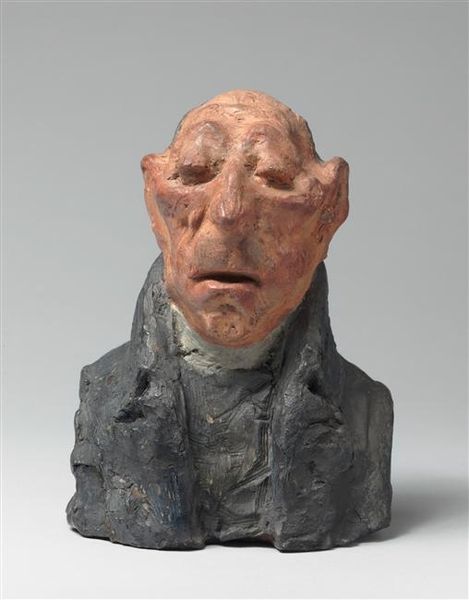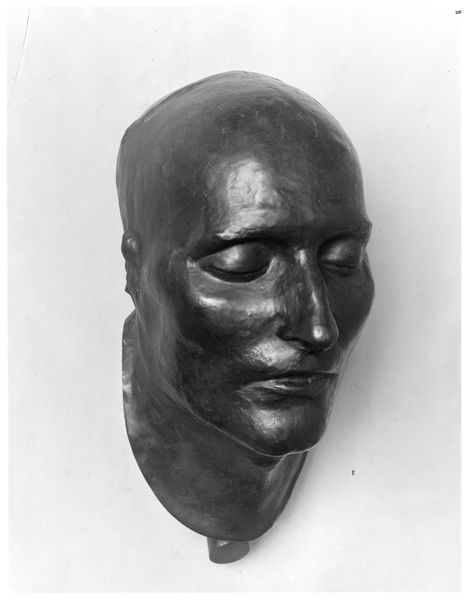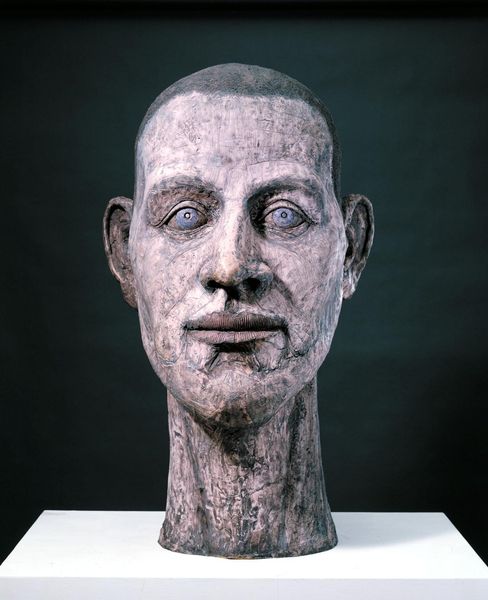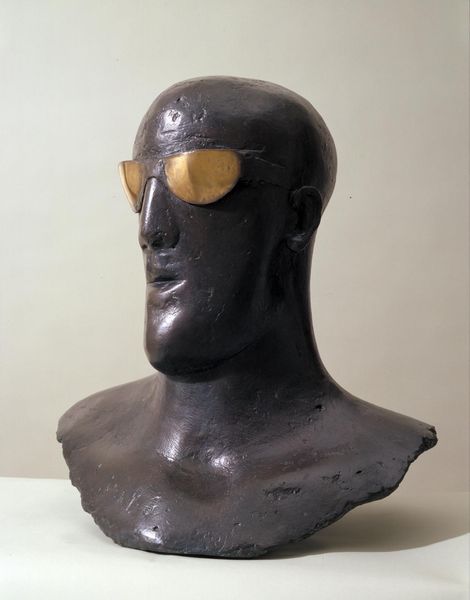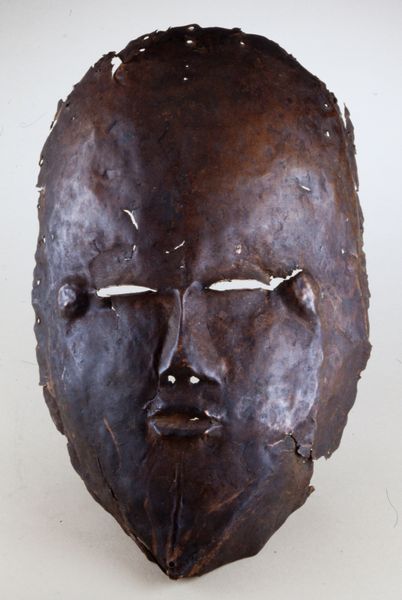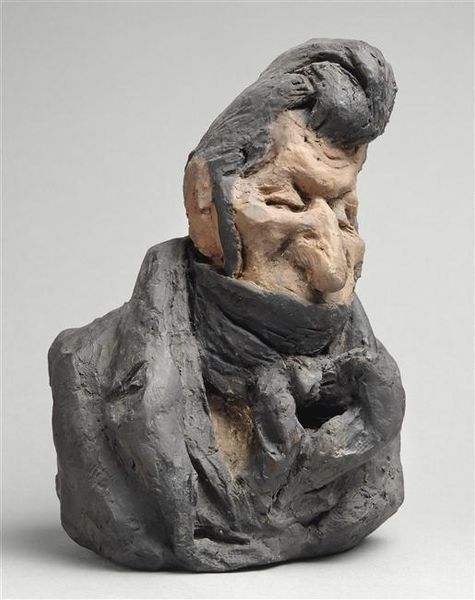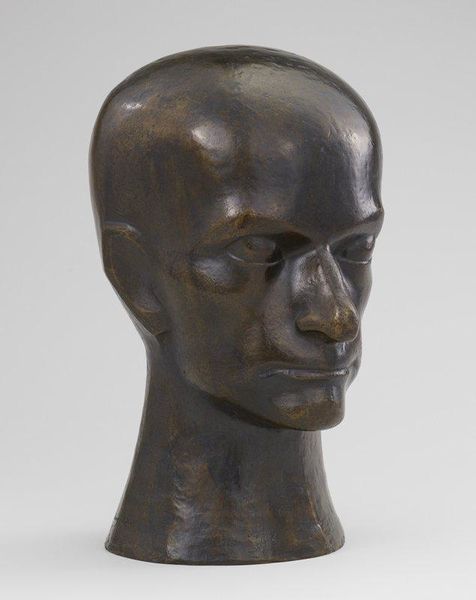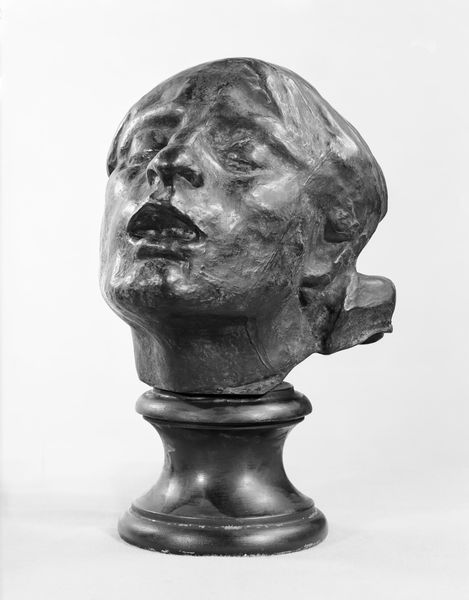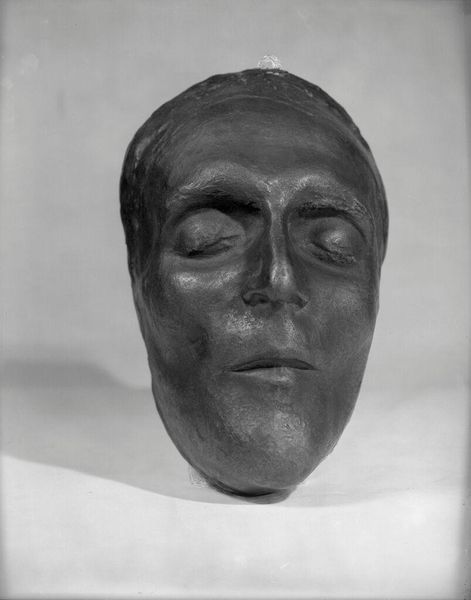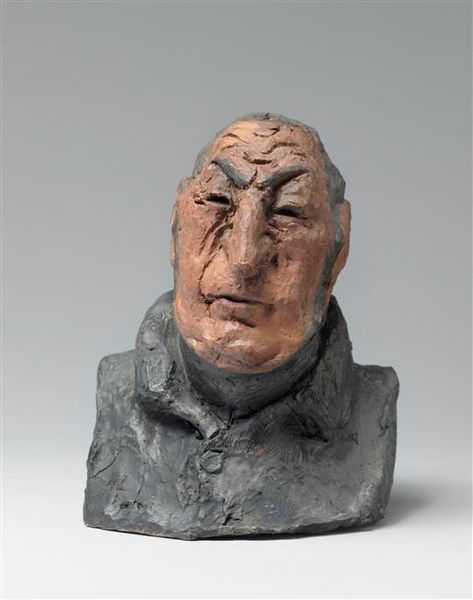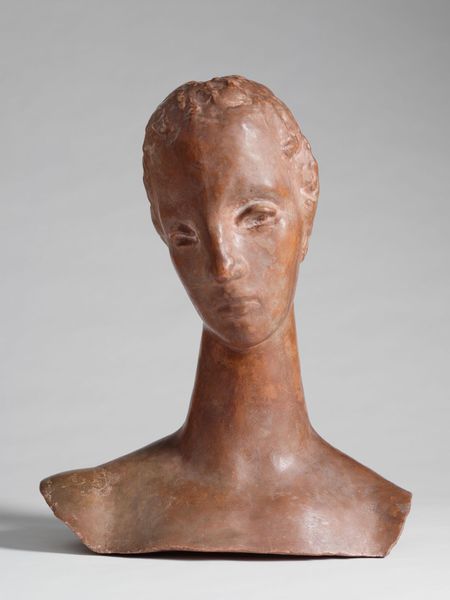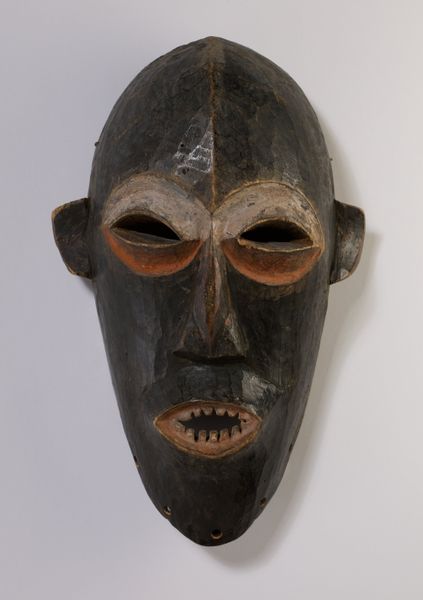
Dimensions: object: 279 x 178 x 267 mm
Copyright: © John Davies, courtesy Marlborough Fine Art, London | CC-BY-NC-ND 4.0 DEED, Photo: Tate
Editor: This is John Davies' "Dogman" from the Tate Collection. It's intriguing and unsettling. What strikes you most about this sculpture? Curator: The "Dogman" reflects anxieties about shifting identities in a rapidly changing society. Davies seems to confront the post-war era's questioning of humanity. How do you see the work engaging with themes of power and control? Editor: I guess the mask-like structure suggests a loss of individual agency? Curator: Precisely. It speaks to subjugation, perhaps mirroring societal pressures on marginalized bodies and identities. Editor: That's a really interesting take. I see it differently now!
Comments
Join the conversation
Join millions of artists and users on Artera today and experience the ultimate creative platform.
tate 6 months ago
⋮
Davies's 'William Jeffrey with Device', also in this display, was cast from life. However, 'Dogman' was originally modelled by the artist in clay. A plaster mould was then made, and from this the head was cast in fibreglass and painted. Both sculptures incorporate what Davies calls a 'device'. Here, this takes the form of a dog-like muzzle which was modelled onto the features of the head. Glass eyes complete the illusion of reality, despite this bizarre appendage. The viewer is thus presented with a paradox: a head which appears both naturalistic and simultaneously fantastic. Davies exploits this disturbing ambiguity to amplify the physical presence of this 'portrait'. Gallery label, August 2004
